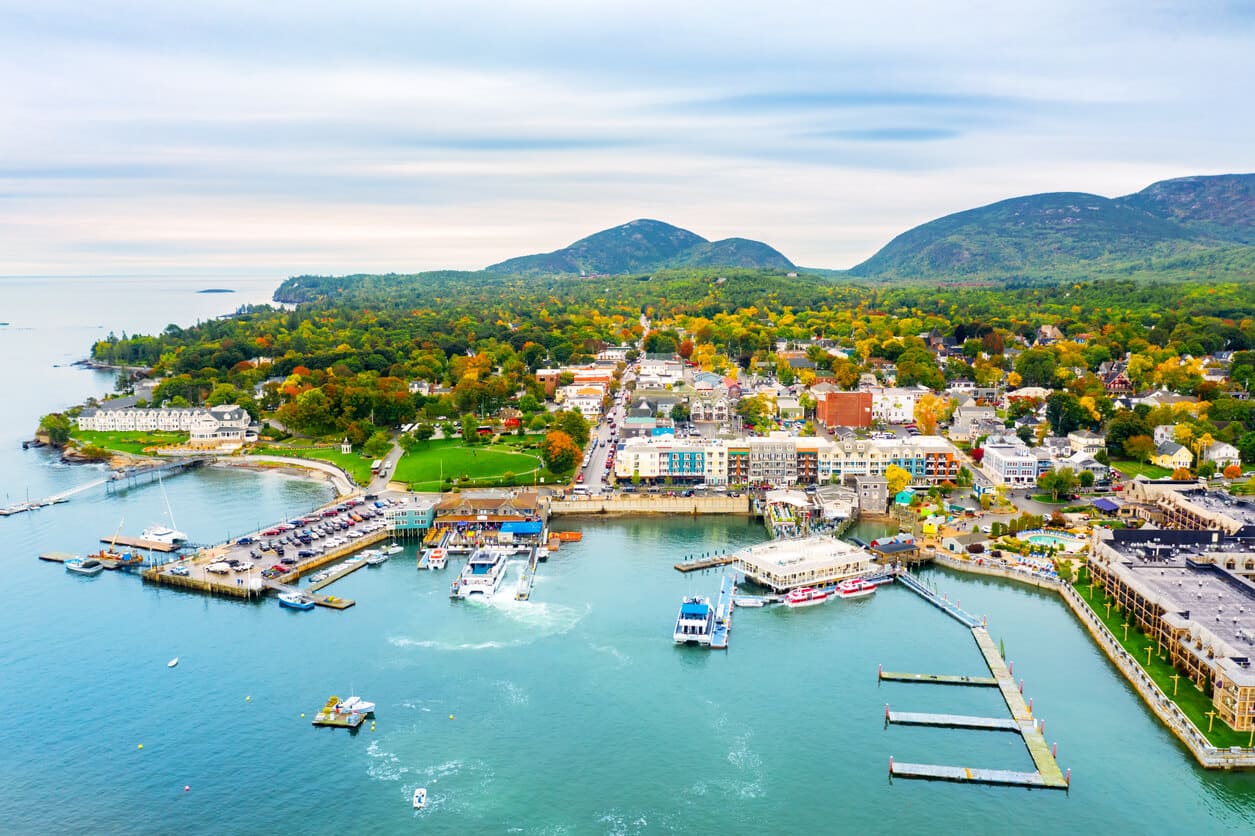Home>Weather and Climate>The Climate Of Florida: A Comprehensive Guide To Weather Patterns And Conditions In The Sunshine State


Weather and Climate
The Climate Of Florida: A Comprehensive Guide To Weather Patterns And Conditions In The Sunshine State
Published: March 1, 2024
Discover the diverse weather and climate patterns of Florida with our comprehensive guide. Learn about the Sunshine State's unique weather conditions and climate trends.
(Many of the links in this article redirect to a specific reviewed product. Your purchase of these products through affiliate links helps to generate commission for Temperatures.com, at no extra cost. Learn more)
Table of Contents
Introduction
Welcome to the Sunshine State, where the weather is as diverse as the people who call it home. Florida, known for its stunning beaches, vibrant cities, and unique ecosystems, experiences a rich tapestry of weather patterns and climatic conditions. From the tropical warmth of the southern regions to the temperate climate of the northern areas, Florida's weather is a fascinating subject that captivates residents and visitors alike.
In this comprehensive guide, we will delve into the intricate details of Florida's climate, exploring the factors that shape its weather patterns, the influence of its geography and topography, and the impact of climate change on this dynamic state. From the balmy breezes of the Gulf Coast to the thunderous storms that sweep across the peninsula, Florida's climate is a captivating blend of beauty and power.
Join us as we embark on a journey through the atmospheric wonders of the Sunshine State, uncovering the secrets of its weather and gaining a deeper understanding of the forces that govern its skies. Whether you're a weather enthusiast, a curious traveler, or a proud Floridian, this guide will provide valuable insights into the captivating climate of Florida. So, grab your sunscreen and umbrella as we set out to explore the diverse and ever-changing weather of this remarkable state.
Geography and Topography of Florida
Florida, situated in the southeastern United States, boasts a unique geographical and topographical makeup that significantly influences its weather patterns. The state is a peninsula, bordered by the Gulf of Mexico to the west and the Atlantic Ocean to the east, which plays a pivotal role in shaping its climate. With a land area of approximately 65,758 square miles, Florida's diverse landscapes encompass coastal plains, marshes, wetlands, and the iconic Everglades, making it a haven for ecological diversity.
The northern region of Florida features rolling hills and a slightly cooler climate compared to the rest of the state. As one travels southward, the terrain gradually transforms into a flat, expansive peninsula, characterized by a subtropical climate. The state's highest point, Britton Hill, stands at a modest 345 feet above sea level, emphasizing the predominantly low-lying nature of the land.
The proximity of Florida to the equator contributes to its warm and humid climate, with the southern regions experiencing a true tropical environment. The state's unique geography, with its intricate network of water bodies, wetlands, and coastal plains, creates microclimates that vary from region to region. These diverse landscapes, coupled with the influence of the surrounding bodies of water, contribute to the rich tapestry of weather conditions experienced across the state.
The interaction between Florida's topography and the surrounding water bodies forms the foundation of its climate, fostering a dynamic and ever-changing atmospheric environment. The state's geography not only shapes its weather patterns but also plays a crucial role in defining its ecological systems, making Florida a captivating tapestry of natural wonders.
From the lush greenery of the northern woodlands to the sun-drenched beaches of the southern coast, Florida's geography and topography lay the groundwork for the captivating weather patterns that define the Sunshine State. As we continue our exploration, we will unravel the intricate influence of the Gulf of Mexico and the Atlantic Ocean on Florida's climate, delving into the mesmerizing interplay between land and sea that governs the state's atmospheric dynamics.
The Influence of the Gulf of Mexico and Atlantic Ocean
The Gulf of Mexico and the Atlantic Ocean exert a profound influence on Florida's climate, shaping its weather patterns and contributing to the state's unique atmospheric dynamics. The proximity of Florida to these expansive bodies of water plays a pivotal role in modulating its temperatures, fostering maritime influences, and fueling the development of weather systems.
The Gulf of Mexico, with its warm waters and vast expanse, acts as a reservoir of heat, especially during the summer months. As the sun's rays penetrate the Gulf's surface, the water absorbs and retains significant amounts of heat, creating a thermal reservoir that influences the adjacent coastal regions. This phenomenon results in milder temperatures along the Gulf Coast, providing a contrast to the inland areas and the Atlantic coastline.
The Atlantic Ocean, with its immense size and dynamic currents, also contributes to Florida's climate by regulating temperatures and moisture levels. The ocean's proximity to the eastern side of the state introduces maritime influences, leading to more moderate temperature fluctuations and higher humidity levels. The interaction between the warm, moist air from the ocean and the landmass of Florida gives rise to the state's characteristic humidity and frequent afternoon thunderstorms, particularly during the summer months.
Moreover, the Gulf Stream, a powerful ocean current flowing along the eastern coast of North America, influences Florida's climate by transporting warm water from the tropics northward. This current not only affects the temperature of the coastal areas but also plays a role in shaping weather patterns and influencing the intensity of tropical systems that impact the state.
The combined influence of the Gulf of Mexico and the Atlantic Ocean creates a dynamic and diverse climate across Florida, with the coastal regions experiencing milder temperatures, higher humidity, and a greater propensity for convective weather phenomena. The interplay between land and sea, driven by the intricate relationship between the state's topography and the surrounding water bodies, fosters a captivating atmospheric environment that defines Florida's weather patterns.
As we unravel the impact of these vast bodies of water on Florida's climate, it becomes evident that the state's weather is intricately intertwined with the ebb and flow of the Gulf of Mexico and the Atlantic Ocean. The next section of our exploration will delve into the seasonal weather patterns that unfold across the Sunshine State, offering a deeper understanding of the diverse climatic conditions that grace this captivating peninsula.
Seasonal Weather Patterns
Florida's seasonal weather patterns exhibit a remarkable diversity, reflecting the state's unique geographical features and its proximity to the Gulf of Mexico and the Atlantic Ocean. The Sunshine State experiences distinct seasons, each characterized by its own set of weather phenomena and atmospheric conditions.
Spring
Spring in Florida heralds the transition from the cooler winter months to the warmth of summer. As temperatures gradually rise, the state experiences an increase in humidity, accompanied by the emergence of vibrant foliage and blooming flowers. Springtime in Florida is marked by pleasantly warm days and mild evenings, making it an ideal season for outdoor activities and nature exploration. However, it is also a period of heightened convective activity, with the potential for thunderstorms and sporadic rainfall as the atmosphere becomes increasingly unstable.
Summer
Summer in Florida embodies the quintessential tropical experience, with long, sun-drenched days and sultry evenings. The season is characterized by high temperatures, soaring humidity levels, and a propensity for afternoon thunderstorms. The warm waters of the Gulf of Mexico and the Atlantic Ocean contribute to the state's humidity, creating a palpable sense of moisture in the air. Summer also marks the peak of hurricane season, bringing the potential for tropical storms and hurricanes that can impact the state's weather patterns.
Fall
Fall in Florida brings relief from the intense heat of summer, as temperatures gradually begin to moderate. The humidity levels diminish, and the state experiences more comfortable conditions, making it an inviting time for outdoor pursuits. Fall also marks the gradual transition into the dry season, with a decrease in rainfall and a shift towards clearer skies. The state's diverse ecosystems come alive with the changing seasons, offering a spectacle of autumnal colors and a sense of renewal.
Winter
Winter in Florida is a season of contrasts, with the northern regions experiencing cooler temperatures while the southern areas maintain a milder climate. The state's peninsula geography influences the distribution of temperatures, with the coastal regions benefiting from the moderating effects of the surrounding bodies of water. Winter brings a reprieve from the humidity of summer, creating pleasant conditions for outdoor recreation and leisure. While frost and freezing temperatures are rare in most parts of Florida, the northern reaches of the state may occasionally experience brief cold snaps, adding a touch of seasonal variety to the Sunshine State.
The seasonal weather patterns in Florida offer a captivating glimpse into the state's atmospheric tapestry, showcasing the interplay of temperature, humidity, and convective activity across its diverse landscapes. As we continue our exploration, we will delve into the captivating realm of hurricanes and tropical storms, unraveling the impact of these powerful weather phenomena on Florida's climate and its inhabitants.
Hurricanes and Tropical Storms
Florida's geographical location makes it particularly susceptible to the influence of hurricanes and tropical storms. These powerful weather phenomena, characterized by intense winds, torrential rainfall, and potential storm surges, have a profound impact on the state's climate and the lives of its residents.
The Atlantic hurricane season, which officially runs from June 1st to November 30th, poses a significant threat to Florida, with the peak of hurricane activity typically occurring between August and October. The warm waters of the Atlantic Ocean and the Gulf of Mexico provide the energy needed for the formation and intensification of tropical cyclones, making Florida a prime target for these formidable storms.
The impact of hurricanes and tropical storms extends beyond the immediate threat of wind and rain. These weather events can result in widespread flooding, power outages, property damage, and, in severe cases, loss of life. The state's coastal communities are particularly vulnerable to storm surges, which occur when powerful winds drive ocean water inland, leading to inundation and potential devastation along the coastline.
The history of hurricanes in Florida is a testament to the state's resilience in the face of natural disasters. From the catastrophic impact of Hurricane Andrew in 1992 to the widespread devastation caused by Hurricane Irma in 2017, Floridians have demonstrated remarkable strength and preparedness in the aftermath of these powerful storms. The state's infrastructure, building codes, and emergency response systems have evolved to mitigate the impact of hurricanes, emphasizing the importance of preparedness and proactive measures in safeguarding lives and property.
In recent years, the discussion surrounding the impact of climate change on the frequency and intensity of hurricanes has gained prominence. While the scientific community continues to study the complex relationship between climate change and tropical cyclones, there is growing evidence to suggest that rising sea levels and warmer ocean temperatures may contribute to the potential for more powerful hurricanes in the future.
As Florida navigates the ever-present risk of hurricanes and tropical storms, the state's residents remain vigilant and resilient, recognizing the need for proactive planning, emergency preparedness, and community solidarity in the face of these formidable weather events.
The influence of hurricanes and tropical storms on Florida's climate underscores the dynamic and often unpredictable nature of the state's weather patterns. As we reflect on the impact of these powerful phenomena, we gain a deeper appreciation for the resilience and adaptability of the Sunshine State and its inhabitants in the face of nature's most formidable displays.
Temperature and Precipitation Trends
The temperature and precipitation trends in Florida offer a captivating insight into the state's climatic nuances, reflecting the interplay of geographical influences, seasonal variations, and the impact of surrounding water bodies. Florida's climate is characterized by its warmth, humidity, and the distinct patterns of rainfall that shape its diverse ecosystems.
Temperature Trends
Florida's temperatures exhibit a remarkable contrast between the northern and southern regions, influenced by the state's unique geography and proximity to the Gulf of Mexico and the Atlantic Ocean. The northern areas experience a more temperate climate, with cooler winters and milder summers, while the southern reaches embrace a true tropical environment, characterized by year-round warmth and higher humidity levels.
The summer months bring the peak of heat and humidity, with temperatures often soaring into the 90s Fahrenheit (32-37°C) across the state. The warm waters of the Gulf of Mexico and the Atlantic Ocean contribute to the muggy conditions, creating a palpable sense of tropical warmth. Conversely, winter in Florida offers a reprieve from the summer heat, with the northern regions experiencing cooler temperatures, occasionally dipping into the 30s and 40s Fahrenheit (0-9°C), while the southern areas maintain milder conditions, rarely dropping below 60s and 70s Fahrenheit (15-25°C).
Precipitation Trends
Florida's precipitation patterns exhibit a distinct seasonality, with the state experiencing wet and dry seasons that shape its ecosystems and agricultural landscapes. The summer months bring frequent afternoon thunderstorms, fueled by the combination of intense heat and moisture-laden air. These convective storms contribute to the state's annual rainfall, with some areas receiving over 50 inches (1270 mm) of precipitation per year.
Conversely, the winter and spring months mark a drier period for Florida, with reduced convective activity and a decrease in overall rainfall. The transition from the wet season to the dry season brings a noticeable shift in precipitation patterns, impacting the state's water resources, agricultural practices, and ecological balance.
The influence of precipitation on Florida's climate extends beyond the seasonal variations, shaping the state's diverse ecosystems, including the iconic Everglades, marshes, and coastal wetlands. The delicate balance between rainfall and evaporation plays a crucial role in maintaining the ecological health of these unique environments, emphasizing the significance of precipitation trends in sustaining Florida's natural landscapes.
As we unravel the temperature and precipitation trends that define Florida's climate, we gain a deeper appreciation for the intricate balance of warmth, humidity, and rainfall that shapes the Sunshine State's atmospheric tapestry. These trends not only reflect the state's climatic diversity but also underscore the dynamic interplay of natural forces that govern its weather patterns.
The temperature and precipitation trends in Florida offer a captivating insight into the state's climatic nuances, reflecting the interplay of geographical influences, seasonal variations, and the impact of surrounding water bodies. Florida's climate is characterized by its warmth, humidity, and the distinct patterns of rainfall that shape its diverse ecosystems.
Temperature Trends
Florida's temperatures exhibit a remarkable contrast between the northern and southern regions, influenced by the state's unique geography and proximity to the Gulf of Mexico and the Atlantic Ocean. The northern areas experience a more temperate climate, with cooler winters and milder summers, while the southern reaches embrace a true tropical environment, characterized by year-round warmth and higher humidity levels.
The summer months bring the peak of heat and humidity, with temperatures often soaring into the 90s Fahrenheit (32-37°C) across the state. The warm waters of the Gulf of Mexico and the Atlantic Ocean contribute to the muggy conditions, creating a palpable sense of tropical warmth. Conversely, winter in Florida offers a reprieve from the summer heat, with the northern regions experiencing cooler temperatures, occasionally dipping into the 30s and 40s Fahrenheit (0-9°C), while the southern areas maintain milder conditions, rarely dropping below 60s and 70s Fahrenheit (15-25°C).
Precipitation Trends
Florida's precipitation patterns exhibit a distinct seasonality, with the state experiencing wet and dry seasons that shape its ecosystems and agricultural landscapes. The summer months bring frequent afternoon thunderstorms, fueled by the combination of intense heat and moisture-laden air. These convective storms contribute to the state's annual rainfall, with some areas receiving over 50 inches (1270 mm) of precipitation per year.
Conversely, the winter and spring months mark a drier period for Florida, with reduced convective activity and a decrease in overall rainfall. The transition from the wet season to the dry season brings a noticeable shift in precipitation patterns, impacting the state's water resources, agricultural practices, and ecological balance.
The influence of precipitation on Florida's climate extends beyond the seasonal variations, shaping the state's diverse ecosystems, including the iconic Everglades, marshes, and coastal wetlands. The delicate balance between rainfall and evaporation plays a crucial role in maintaining the ecological health of these unique environments, emphasizing the significance of precipitation trends in sustaining Florida's natural landscapes.
As we unravel the temperature and precipitation trends that define Florida's climate, we gain a deeper appreciation for the intricate balance of warmth, humidity, and rainfall that shapes the Sunshine State's atmospheric tapestry. These trends not only reflect the state's climatic diversity but also underscore the dynamic interplay of natural forces that govern its weather patterns.
Climate Change and its Impact on Florida
Climate change poses significant challenges to Florida's environmental, social, and economic landscape, exerting a discernible impact on the state's weather patterns and ecological balance. The implications of climate change are multifaceted, encompassing rising sea levels, increasing temperatures, and the intensification of extreme weather events, all of which have far-reaching consequences for Florida's residents and natural ecosystems.
One of the most pressing concerns related to climate change in Florida is the phenomenon of sea-level rise. As global temperatures continue to increase, polar ice caps and glaciers are melting at an accelerated pace, leading to a rise in sea levels. For a low-lying state like Florida, this presents a formidable challenge, as coastal communities and infrastructure are increasingly vulnerable to inundation and saltwater intrusion. The encroachment of rising seas poses a threat to property, freshwater resources, and delicate coastal ecosystems, necessitating proactive measures to adapt to and mitigate the impact of sea-level rise.
In addition to rising sea levels, climate change contributes to the amplification of extreme weather events, including hurricanes and tropical storms. Warmer ocean temperatures provide the energy needed for the intensification of tropical cyclones, leading to the potential for more powerful and destructive hurricanes. The increased frequency and intensity of these weather phenomena pose a significant risk to Florida's coastal regions, necessitating robust disaster preparedness and infrastructure resilience to safeguard lives and property.
Furthermore, the warming climate influences the state's ecological systems, affecting biodiversity, water resources, and agricultural productivity. Shifts in temperature and precipitation patterns can disrupt delicate ecological balances, impacting native flora and fauna, as well as the availability of water for human consumption and agricultural use. The delicate balance of Florida's unique ecosystems, including the Everglades and coastal wetlands, faces the challenge of adapting to changing climatic conditions, underscoring the need for conservation and sustainable management practices.
Addressing the impact of climate change in Florida requires a multifaceted approach, encompassing mitigation efforts to reduce greenhouse gas emissions, adaptation strategies to enhance resilience to environmental changes, and proactive measures to protect vulnerable communities and natural habitats. By fostering a culture of environmental stewardship, embracing sustainable practices, and investing in innovative solutions, Florida can navigate the complexities of climate change and strive towards a more resilient and sustainable future for its residents and natural wonders.
Conclusion
As we draw the curtains on our exploration of the climate of Florida, we emerge with a profound appreciation for the intricate tapestry of weather patterns, geographical influences, and the dynamic interplay of natural forces that define the Sunshine State's atmospheric landscape. From the temperate woodlands of the north to the tropical allure of the south, Florida's climate embodies a captivating blend of warmth, humidity, and seasonal variability, reflecting the state's diverse ecosystems and rich ecological heritage.
The geographical and topographical features of Florida, including its peninsula shape, coastal plains, and proximity to the Gulf of Mexico and the Atlantic Ocean, lay the foundation for the state's climatic diversity. The influence of these vast bodies of water, coupled with the state's unique terrain, creates a dynamic atmospheric environment that fosters a rich tapestry of weather conditions, from milder temperatures along the coast to the subtropical warmth of the interior regions.
Seasonal weather patterns, characterized by the transition from the balmy days of spring to the sultry embrace of summer and the milder conditions of fall and winter, offer a captivating glimpse into the ebb and flow of Florida's climate. The state's susceptibility to hurricanes and tropical storms underscores the formidable nature of these weather phenomena, shaping the resilience and preparedness of its residents in the face of nature's most powerful displays.
Temperature and precipitation trends further illuminate the intricate balance of warmth, humidity, and rainfall that govern Florida's atmospheric dynamics, reflecting the state's climatic nuances and the impact of surrounding water bodies. The delicate interplay of these factors shapes the diverse ecosystems of Florida, from the iconic Everglades to the coastal wetlands, highlighting the profound influence of climate on the state's natural landscapes.
Amidst the complexities of climate change, Florida stands at the forefront of environmental stewardship, embracing proactive measures to address rising sea levels, extreme weather events, and the preservation of its ecological heritage. By fostering a culture of sustainability, innovation, and resilience, Florida charts a course towards a more resilient and sustainable future, safeguarding its natural wonders and enhancing the well-being of its residents.
As we bid farewell to our exploration of the climate of Florida, we carry with us a deeper understanding of the captivating forces that shape the state's weather patterns and the resilience of its inhabitants. From the sun-kissed shores to the verdant woodlands, Florida's climate stands as a testament to the enduring spirit of adaptation and stewardship, weaving a narrative of natural beauty and human resilience in the face of a dynamic and ever-changing atmospheric canvas.












